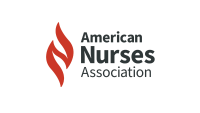Paula M. Neira wants health equity for all.


Combat veteran Paula M. Neira, JD, MSN, RN, CEN, FAAN, worked as an emergency department nurse before attending law school. As an attorney, she helped lead efforts to repeal the U.S. Military’s Don’t Ask, Don’t Tell policy. Neira, a Maryland Nurses Association member, currently serves as program director of LGBTQ+ Equity and Education in the Johns Hopkins Medicine Office of Diversity, Inclusion and Health Equity. The American Nurses Association recently spoke with her about nursing’s role in achieving health equity for all.
You’ve been a Navy officer, a nurse, and a lawyer. How have these careers influenced one another?
The day I was inducted into the Naval Academy as a midshipman, I took an oath swearing to support and defend the Constitution against all enemies, foreign and domestic, and bear true faith and allegiance to the same. Everything I’ve done in my career flows from that oath.
As a nurse, I’m working to improve transgender healthcare and, more broadly, healthcare for the entire LGBTQ+ community. The fact that people are denied healthcare based on other people’s prejudices offends the constitutional values that say we’re all equally worthy.
The most important thing I’ve done as a lawyer has been my work on ending the Don’t Ask, Don’t Tell policy and changing the regulations for transgender military service.
What are the major barriers to quality care for the LGBTQ+ community?
The health disparities that the community faces are well-documented. We as healthcare providers need to recognize that our organizations, policies, and programs, with very few exceptions, weren’t designed or written with LGBTQ+ people in mind.
One example involves mandatory urine pregnancy tests for female patients. Pregnancy tests are necessary for anyone who has childbearing capacity, and that may include nonbinary people and transgender men.
When we look at health equity concerns, there is a glaring lack of data for the LGBTQ+ population. Historically, either through benign neglect or intentional exclusion, we haven’t sought to capture this basic data—sexual orientation, gender identity, and more—in the electronic health record.
How can nurse leaders work toward removing these barriers?
First, nursing leaders need to do some introspection. All of us have to unlearn the things that have contributed to our own implicit and unconscious bias. We need to make sure we’re not operating from ignorance, prejudice, or stereotypes.
Nurses should be at the forefront of work to change discriminatory policies. Look at the Code of Ethics for Nurses with Interpretive Statements. Diversity, inclusion, health equity, and social justice are its core elements. It’s not a radical notion. It’s the lived and applied embodiment of nursing’s ethics.
Please share a critical leadership lesson you’ve learned.
The overarching one, particularly for folks committed to making changes in the nursing profession, is that you must have patience and resilience. Patience is critical if you’re going to stay in the fight for equality and equity. You’ve got to have resilience because this fight will wear you down.
How can nurses address legislation discriminating against transgender and gender-diverse children and teenagers?
We as healthcare leaders are guided by evidence-based practice. Evidence shows that gender-affirming care is the most effective treatment for kids dealing with gender dysphoria or gender incongruence. We know that affirming kids as they work through these issues reduces suicidality, anxiety, and depression, and it helps them be healthier. Our job is to stand up and say the beliefs behind this legislation aren’t supported by the evidence.
— Interview by Elizabeth Moore, writer at ANA.


















